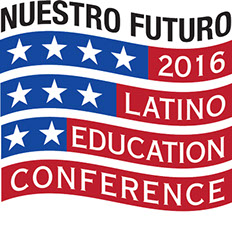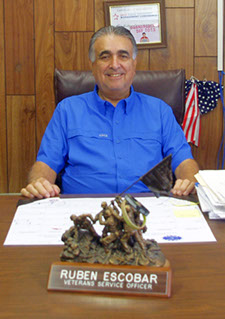

Inspiring Latino Youth
Did you know that an estimated fifty percent of all engineers working in the U.S. today will retire within fifteen years? This will likely cause a tremendous problem for our technological base. For certain, there is an urgent need to address the Science, Technology, Engineering, Math (STEM) capabilities of the country. The expected shortfall of STEM workers is recognized by the White House and billions of federal dollars are being distributed at the state and local levels to encourage training, jobs and investments in STEM based endeavors. Corporations also recognize the critical need for STEM skills and are investing in people and programs to develop a pool of talent that can produce the next generation of innovative products and services. In fact, many of these corporations are sponsoring community activities and events to promote STEM skills education and are developing in-house teaching and training programs.
the next generation of innovative products and services. In fact, many of these corporations are sponsoring community activities and events to promote STEM skills education and are developing in-house teaching and training programs.
My organization, the Latino STEM Alliance (LSA), is a Massachusetts-based non-profit organization that partners with schools, private industry, community groups and academia to bring STEM experiences to underserved and at-risk youth who normally would not have such an opportunity. Our goal is simple: to increase the number of underrepresented minorities that pursue and attain STEM degrees or careers while fostering skills of collaboration, critical thinking and creativity.
Our plan follows a high-touch, multi-directional approach that includes harnessing children’s natural enthusiasm for learning by providing hands-on learning experiences, team-building exercises, and opportunities to showcase the products of their work, along with offering parents with opportunities to become involved in their students’ learning and encourage success. We also partner with inner-city schools to augment after-school day care activities with STEM enrichment opportunities and with area universities and employers to enhance our own programming and to provide children with a vision of the numerous opportunities available on the STEM career ladder.
When people ask us if our tactic is working, I immediately think of “Marco,” one of many students who participated in the 2016 Latino STEM Alliance Annual Robotics Competition.
Marco’s parents did not send Marco to school until he was 8 years old. For the first six years, he struggled through special-ed classes, trying to catch up, but he still experienced considerable failure. He felt it acutely when learned he would have to repeat eighth grade while his classmates would move on to high school.
Today, Marco says that being retained was “the best thing that could’ve happened.” He was able to join our robotics program and the experience impacted his self-efficacy. In robotics, Marco found likeminded peers and support group of sorts. The robotics instructor encouraged the students to share ideas and different approaches to solve a problem and to learn from their failures—and then move on to the next challenge. Marco discovered the benefits of teamwork and tenacity. He recognized that he had stopped trying in school and decided to put more effort into his work in the classroom.
Marco’s team reached the semi-final round of LSA’s year-end competition. Although his team did not win, he found a newfound interest in engineering. Marco now envisions a future of attending Northeastern University and then becoming famous for making an artificial intelligence robot for hospitals throughout the world. He now believes in himself and his future.
Other students who attended LSA wrote to us after the program saying that STEM taught them that they can achieve anything if they put their mind to it.
Following the LSA program, many opportunities follow for further success in STEM for young Latinos. However, for a young man to access many of those opportunities, he must first register with the Selective Service System. Failure to register will put a block on college loans and grants, access to job training and certification programs, and restrict eligibility to millions of available federal, state municipal and contractor jobs.
It’s critically important that young men know about the registration requirement and follow through. It is a federal law that all men must register when they become 18 and it’s a civic duty. It’s important to know that the door closes forever if a man does not register by his 26th birthday. If he fails to register by 26, he can be permanently barred from benefits like loans, training, and careers. And failure to register can also impact how quickly an immigrant man can become a citizen.
Most troubling is that, unfortunately, the same at-risk young men our program seeks to support, suffer the highest risk of failing to register.
The good news is that registration is easy. Men can register in less than a minute online at sss.gov, or check the appropriate box on the Free Application for Federal Student Aid (FAFSA). All immigrants must register—documented and un-documented. Those men without a social security number can register at any post office, or print out a registration form from sss.gov, and mail it in. That two minutes that can mean a lifetime of opportunities to pursue their new dreams of careers in STEM-related fields.
To inspire students to consider STEM-related careers through hands-on STEM enrichment activities and relevant role-models, visit our website www.latinostem.org.
Amanda Martinez is the Executive Director of the Latino STEM Alliance.
Giving Back
Giving back to the community is important to me. As a retired postmaster, I dedicated much of my life to public service—and I continue to enjoy serving my community and my country as a board member for the Selective Service System.
Local Board Members are volunteers nominated by state governor or equivalent officials, and appointed by the Director of the Selective Service System on behalf of the U.S. President. We play an important community role closely connected with our nation’s defense.
Director of the Selective Service System on behalf of the U.S. President. We play an important community role closely connected with our nation’s defense.
There isn’t a draft now, and it’s unlikely there will be one in the foreseeable future. If a military draft becomes necessary, however, approximately 2,000 local boards throughout the United States—almost 11,000 individuals—would decide which young men in each community receive deferments, postponements, or exemptions from military service based on federal guidelines. Volunteer board members like me are trained and ready to make sure that the process is equitable.
As part of Selective Service’s commitment to a fair process, board members are chosen to reflect the communities we live in. As a Tejano Latino, and fourth generation Texan, I take great pride in reflecting my community in San Diego, Texas, part of Duval County.
Although it is not a requirement for serving on the board, I also enjoy talking to young men in my community to remind them about the importance of registering with Selective Service. Every week, Selective Service fields hundreds of inquiries from men who never registered and are now potentially permanently barred from federal student loans and grants, job training programs, and many federal and state jobs. And failure to register can also significantly complicate matters for immigrant men seeking to become U.S. citizens. Anecdotally, Latino men are more likely to miss the message about registration—and miss out on many of these opportunities. This is particularly true for young men who do not intend on going to college right after high school, immigrants and refugees, and those who have been incarcerated.
I feel it is my responsibility to make sure these men know about the registration requirement so that their futures are bright and they have all of the resources they need to succeed. Registering with Selective Service takes less than two minutes. Men can register online at sss.gov, or check the appropriate box on the Free Application for Federal Student Aid (FAFSA). Men without a social security number can register at any post office, or print out a registration form from sss.gov and mail it in. It’s a quick and simple process, but one that is critical to ensuring men have access to all of the educational and career options afforded them.
Selective Service is currently looking for new board members in communities around the country, if you’d like to join me in ensuring that the program is fair and equitable—and that all young men know when and how to register. If you are a U.S. citizen, at least 18 years old, and not an active or retired member of the Armed Forces or Reserves, you are eligible to apply to become a board member. The online application is available at http://www.sss.gov/Volunteers/Board-Member-Program. Here’s your chance to become more involved in your community.
Ruben Escobar is a Selective Service Board Member in Duval County, Texas.
A Great Start
The path to creating reasonable immigration policies in America has been long and complex—and it’s far from over. As an attorney myself, I have worked with many men and women on the challenges they face in gaining citizenship and navigating complex programs like Deferred Action for Childhood Arrivals (DACA). I’ve also seen firsthand the disadvantages young immigrants face when it comes to getting an advanced degree and finding good jobs.
But first of all, how did we get here in the first place?
 After Congress repeatedly failed to pass a DREAM Act to provide permanent legal status to the millions of children and young adults who entered the country when they were young, President Obama directed the Department of Homeland Security to provide deferred action to a large number of these people. Although only Congress may provide permanent legal status, the President, under his power to prioritize prosecutions, may ask the agency to look more favorably on certain cases when “deferring” removal. The DACA program has been expanded, widely debated, and litigated all the way to the Supreme Court in the four years since its announcement in June 2012.
After Congress repeatedly failed to pass a DREAM Act to provide permanent legal status to the millions of children and young adults who entered the country when they were young, President Obama directed the Department of Homeland Security to provide deferred action to a large number of these people. Although only Congress may provide permanent legal status, the President, under his power to prioritize prosecutions, may ask the agency to look more favorably on certain cases when “deferring” removal. The DACA program has been expanded, widely debated, and litigated all the way to the Supreme Court in the four years since its announcement in June 2012.
Many of those who benefited from the original DACA program pressured the Obama Administration to help their parents and those who arrived in the country as children but who turned 30 before June 2012. President Obama extended DACA to include the parents of DACA recipients and eliminated an upper age limit. Soon after, 28 states filed a suit against the program, calling it an unconstitutional overreach of presidential power and an unconstitutional imposition on state resources. The expansion of DACA was effectively ended when the Supreme Court deadlocked at 4-4. An incoming administration may view DACA the same way the Fifth Circuit did and terminate the program altogether.
Despite the setback in expanding DACA and the currently bleak future for a DREAM Act, states have recognized that it is in their interests to provide in-state tuition to anyone who has graduated high school, regardless of immigration status. In fact, Texas and Oklahoma were two of the first states to pass laws confirming that all state residents qualify for in-state tuition. Several other states have followed suit.
In the past decade, however, national anti-immigrant forces have funded campaigns to stop these policies and tie states up in expensive lawsuits. They allege that it is unconstitutional for unauthorized immigrants to receive an in-state tuition benefit while US citizens from other states must pay the higher out-of-state tuition. An incoming administration may view DACA the way the Fifth Circuit did, and terminate the program outright.
While not conferring permanent legal status, DACA does provide temporary sanctuary for millions of students by allowing them to attend college and work without immediate fear of deportation. DACA recipients, however, are not eligible for federal financial aid and must rely on their own resources, private scholarships, or private loans. The lack of access to federal resources certainly can affect someone’s ability to attend and complete college.
Another legal requirement of residency facing immigrant men in particular is a general lack of knowledge about the Selective Service registration requirement. The bottom line is that all men ages 18 through 25 must register with Selective Service regardless of their immigration status — DACA or not. If a man applies for citizenship after turning 26 and has failed to register, he may significantly delay the process of becoming a citizen. Failing to register can complicate the process to becoming a citizen and also blocks men from ever receiving federal college loans, participating in federal job training programs, and securing most government jobs. And many states have linked the Federal registration requirement with companion restrictions on non-registrants from state issued financial assistance, state employment, and driver’s licenses. Tennessee goes further and refuses to recognize US citizens as state residents if they do not register.
DACA is a great start to providing access to higher education and employment by taking away the stigma and fears that come with having no legal status. What’s clear, however, is that there is still a long way to go to ensuring equity for young immigrants when it comes to education and good jobs in this country.
Mark Shmueli is an attorney